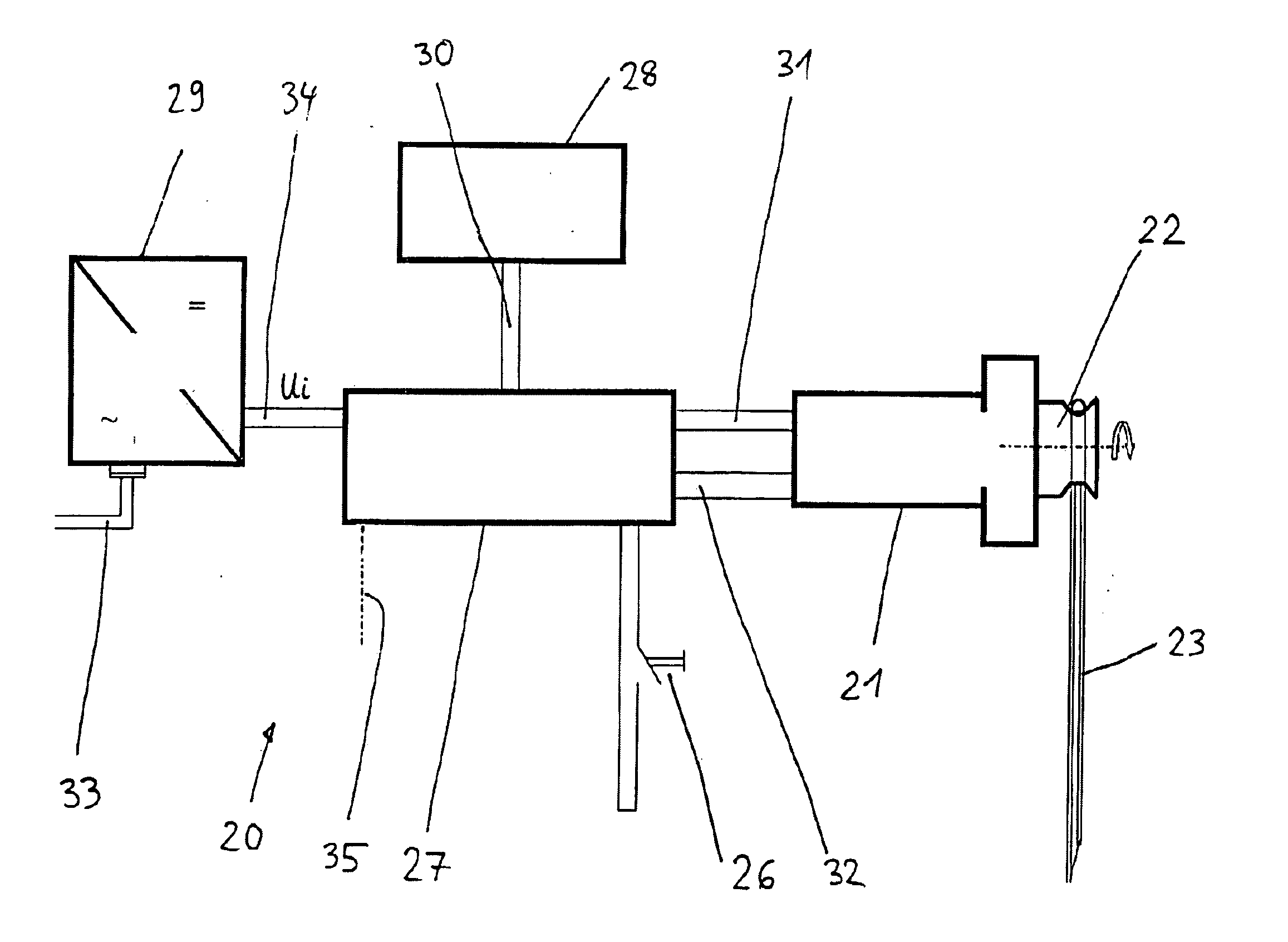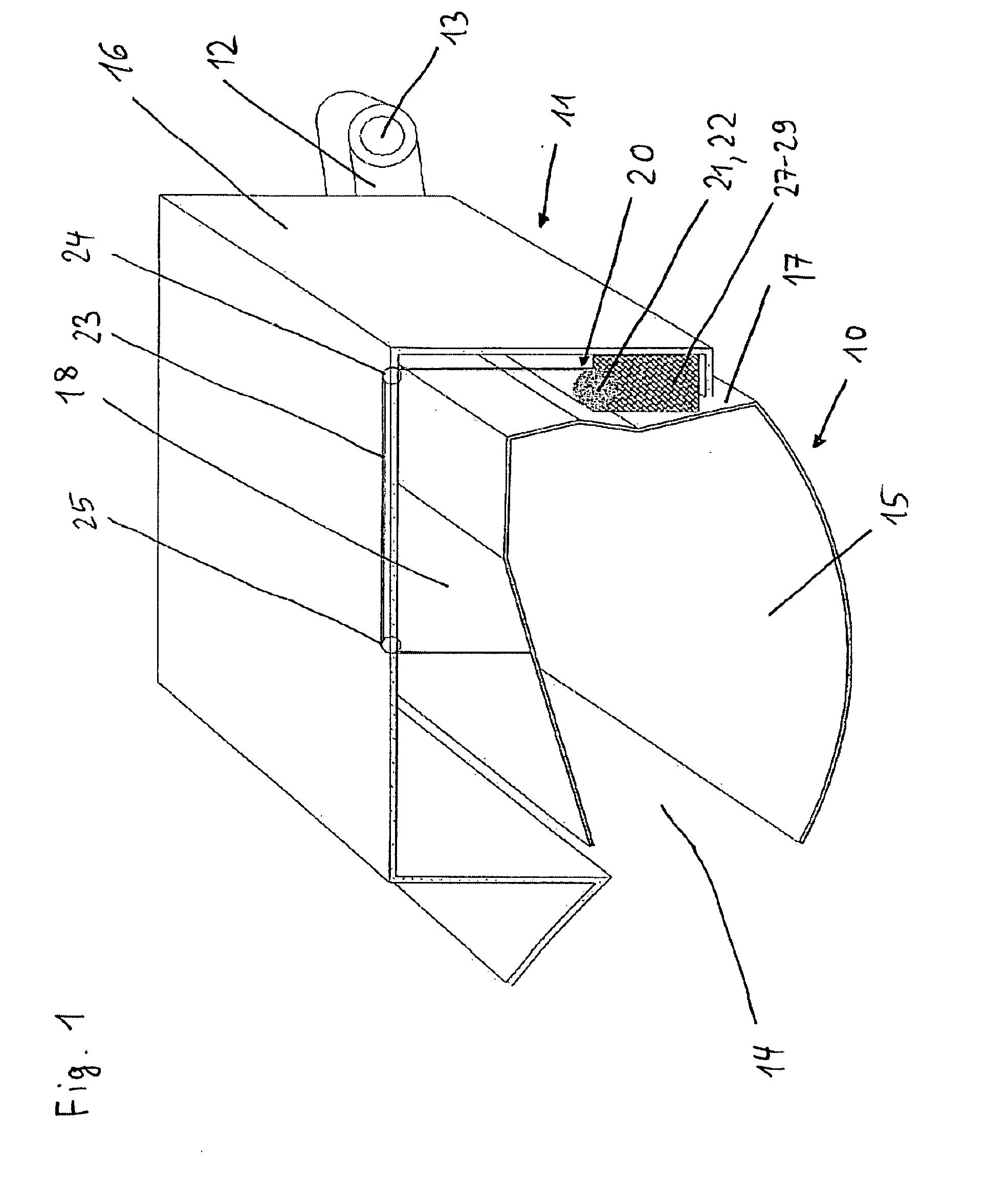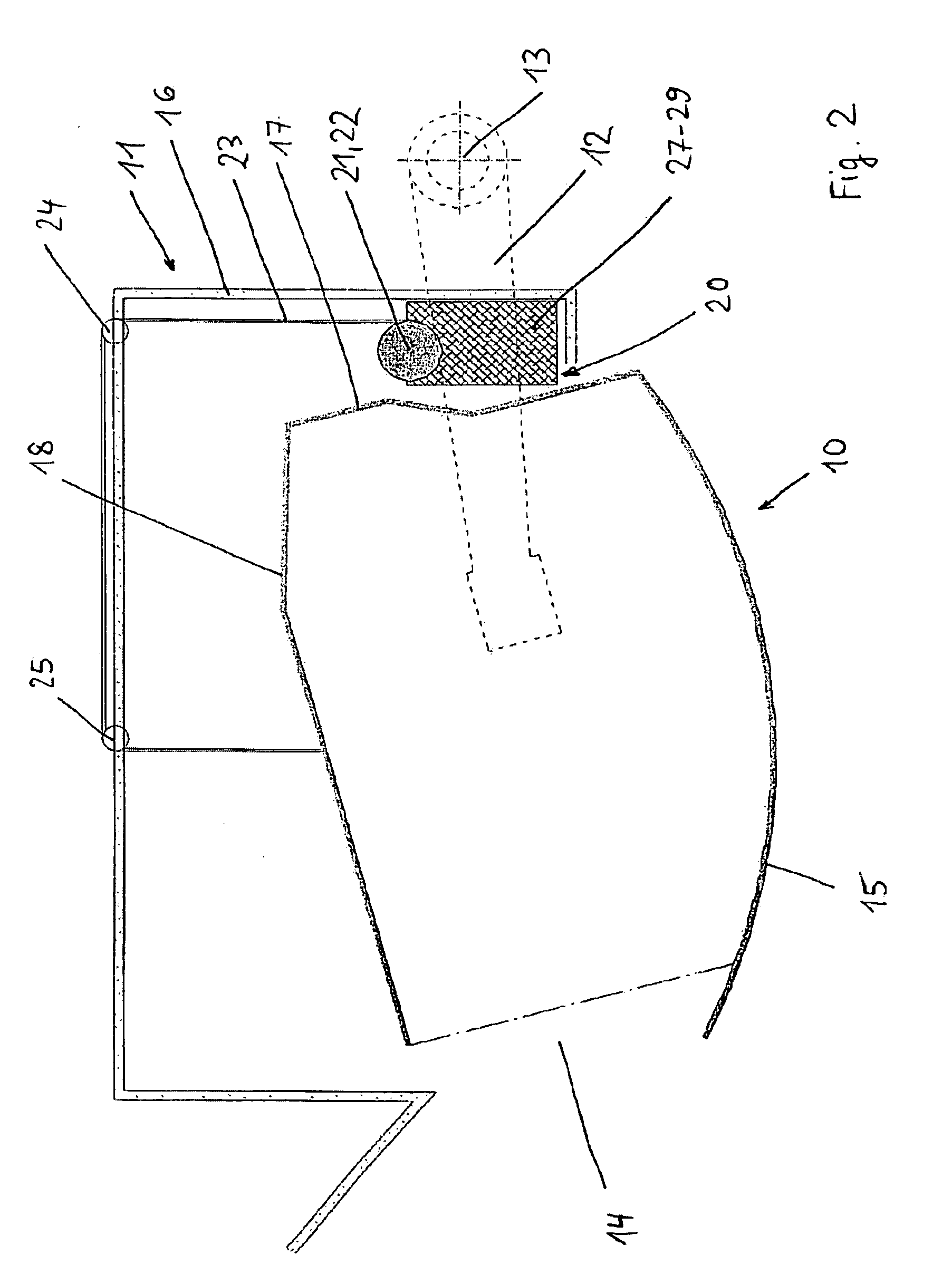Lifting device for a luggage compartment in an aircraft, as well as aircraft with a lifting device for a luggage compartment
a luggage compartment and lifting device technology, which is applied in the direction of dressing tables, transportation and packaging, aircraft crew accommodation, etc., can solve the problems of extraordinary load on the electrical system, high weight, and high cost of pneumatic power generation elements in aircraft, so as to reduce the load on the electrical system, high power, and limited weight
- Summary
- Abstract
- Description
- Claims
- Application Information
AI Technical Summary
Benefits of technology
Problems solved by technology
Method used
Image
Examples
Embodiment Construction
[0015] Other advantageous features are apparent from the following explanation of the invention by means of preferred variants with reference to the appended figures. In the figures:
[0016]FIG. 1: shows a perspective view of a luggage compartment in the open state;
[0017]FIG. 2: shows a cross-sectional view of a luggage compartment in the open state;
[0018]FIG. 3: shows a cross-sectional view of a luggage compartment in the closed state; and
[0019]FIG. 4: shows a schematic view of a lifting device.
[0020] Luggage compartments are arranged in a longitudinal frame 11 above the rows of seats of an aircraft. A luggage compartment 10 is arranged pivotable by means of a support arm 12 relative to longitudinal frame 11 around hinge 13. In the open position depicted in FIGS. 1 and 2, the luggage compartment 10 can be loaded and unloaded through opening 14. In the closed position depicted in FIG. 3, the bottom wall 15 of luggage compartment 10 is sealed off flush with the longitudinal frame 1...
PUM
 Login to View More
Login to View More Abstract
Description
Claims
Application Information
 Login to View More
Login to View More - R&D
- Intellectual Property
- Life Sciences
- Materials
- Tech Scout
- Unparalleled Data Quality
- Higher Quality Content
- 60% Fewer Hallucinations
Browse by: Latest US Patents, China's latest patents, Technical Efficacy Thesaurus, Application Domain, Technology Topic, Popular Technical Reports.
© 2025 PatSnap. All rights reserved.Legal|Privacy policy|Modern Slavery Act Transparency Statement|Sitemap|About US| Contact US: help@patsnap.com



